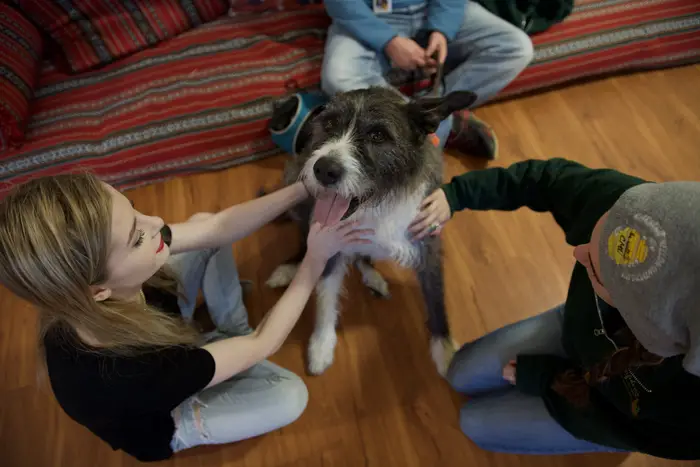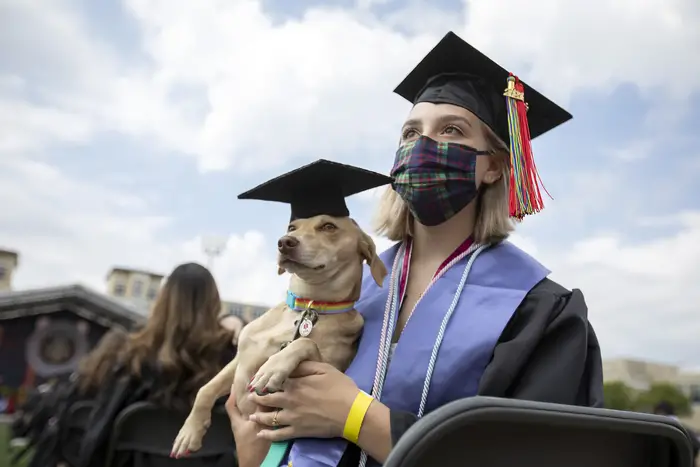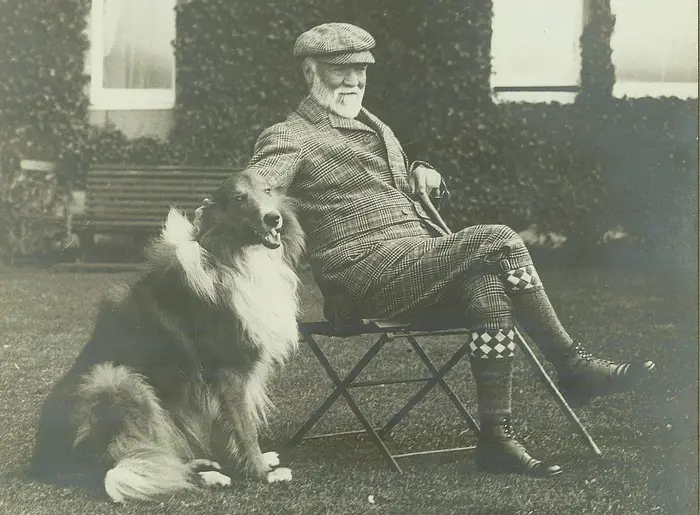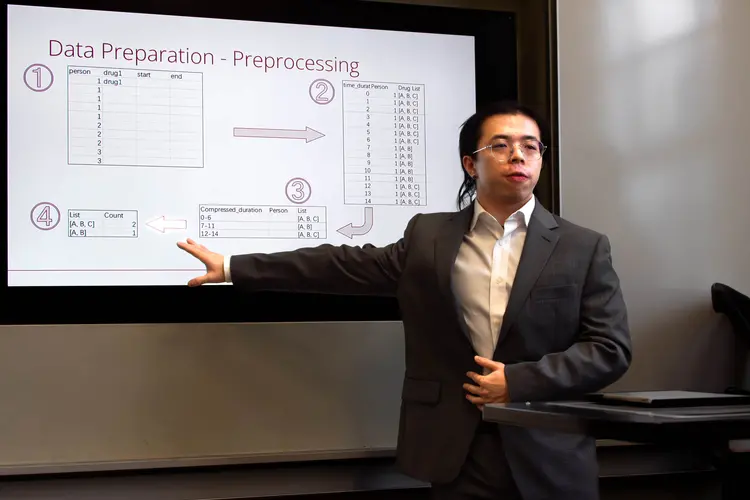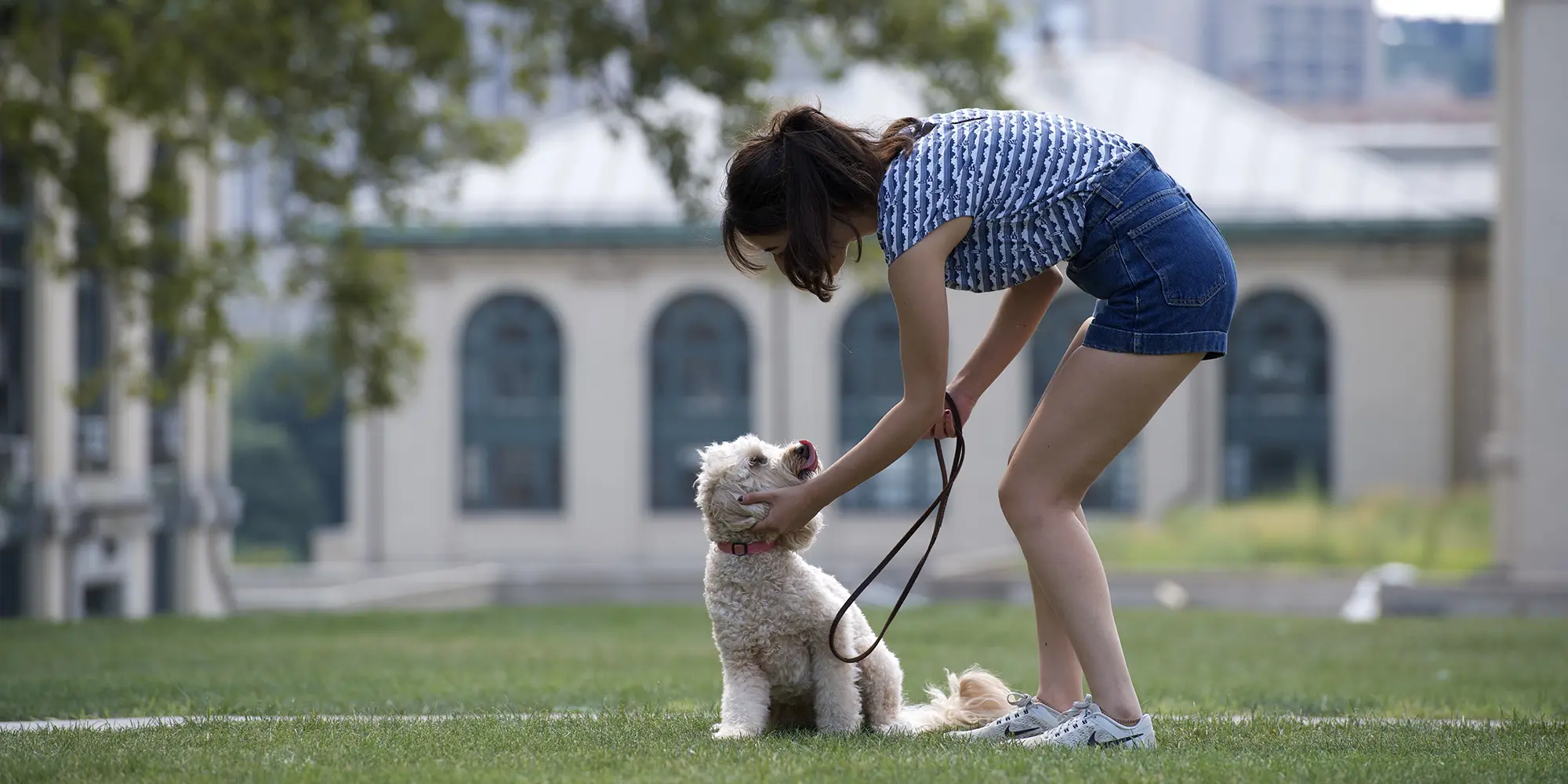
Artificial Intelligence for Product Managers: Empowering Dog Parents
Media Inquiries
This spring, two students taking Artificial Intelligence for Product Managers at Carnegie Mellon University tackled the real-world challenge of improving health care for dogs.
Taught by Catherine Fang(opens in new window), distinguished service professor, Integrated Innovation Institute (opens in new window)students Sangeeta Yadav and Young Yoon gained hands-on experience and learned how to apply AI concepts. The course explored unlocking the value of data, and its potential to transform businesses and human experiences.
For a group project, Yadav and Yoon created Four Paws, an AI-powered conversational chatbot that provides personalized insights for managing the health of dogs.
Their aim: to empower dog owners through personalized, AI-driven health insights. In the following Q&A, Yadav and Yoon discuss the project.
Can you provide a brief overview of your project and what inspired you to select the topic you chose?
Yadav: I have loved dogs since childhood and my family had two dogs that passed away a few years ago. I also witnessed friends struggle to manage their dogs’ health and that experience motivated me to dive deeper into this topic.
Is there a motivation as to why your group is interested in advancing dog’s health care?
Yadav: After interviewing a number of dog parents, shelter staff and pet health insurance professionals we discovered that a pain point was receiving timely and cost-effective assistance when a dog gets sick. This issue is largely driven by unaffordable health care costs and limited access to veterinarians in times of need.
Essentially your tool empowers dog parents to love their dogs more fully — by helping them understand what is going on with their health. Can you provide more details about your conversational chatbot?
Yadav: We created a web-based, AI-powered conversational chatbot to mimic how a dog parent observes early symptoms and guides them through a series of questions to determine the severity of their dog’s symptoms. The chatbot then provides recommendations and resource links from accredited veterinary organizations.
What is your long-term vision for this project?
Yadav: Our vision is to develop a comprehensive solution dog parents can trust that helps them analyze health symptoms and track health patterns over time. It is our goal that the platform will manage all health conditions and offer options to connect with the nearest vet.
What were the key findings or results of your project? Were there any unexpected results? If so, what were they and how did you address them?
Yadav: Market watch(opens in new window) reported that over 30% of pet owners avoid taking their dogs to the vet due to high costs. In our user research, 80% of the folks didn’t have pet insurance and most dog parents only take their dogs to the vet when they find out something serious is going on. How can someone classify whether or not their dog’s condition is serious?
Our goal is not to replace veterinarians, but instead to provide a trusted platform that guides and directs dog parents who may not have pet health insurance. We hope to give these dog parents better guidance to make informed decisions and actually encourage them to take their dog to the vet when their findings indicate that their dog may be dealing with a more serious condition.
In terms of AI from a technical perspective, what is something new that you learned?
Yoon: Sangeeta and I have learned a lot about what AI can and can’t do. This was especially relevant in reducing mistakes and keeping our information accurate. We discovered some limitations of AI. Sometimes the AI provided broken links to vet care resources and websites. To fix this, we had to develop a solution that integrated with the Google Search API to ensure the URLs are correct and up-to-date.
So far you’ve told me what your project is — can you tell me what you project isn’t?
Yoon: Our project is not a replacement for veterinary care. It’s specifically focused on dogs, not other pets like cats. How has this project influenced your academic or career goals? Do you look at anything differently with a new perspective since completing the project for class?
Yadav: This project was very impactful for us, as dogs play a central role in our lives and society as a whole. We took on a serious problem that can have a huge impact on millions of dogs and dog parents, since so much time and energy is spent on taking care of our furry family members. By going through the process of problem discovery and understanding the pain points of dog parents — we became more committed to solving their issues. This project also shifted our views on how we view AI, since it initially can be seen as a fun tool, but we deeply admired how it can also be outfitted for meaningful purposes if used properly.
Can you explain a particularly complex aspect of your project. What tools or technologies did you use, and why did you choose them?
Yoon: One particularly complex aspect of our project was integrating AI with instructional prompt engineering. This was crucial to ensure that the AI could ask the right questions and guide dog owners effectively to provide the right feedback. This process helps the AI reach a symptom-based conclusion accurately and effectively. After multiple test rounds, we ended up choosing OpenAI’s GPT-3.5 as a default generative AI model for its great context recognition capabilities and natural language processing power we could get at low cost.
From a technical perspective, what were the main differences between ChatGPT models 4 and 3.5?
Yoon: The main differences between GPT-4 and GPT-3.5 lie in their capabilities, accuracy, and features. GPT-4 is more advanced, offering improved handling of nuanced language, greater contextual understanding, and the ability to generate more accurate and reliable responses. It also supports multimodality, meaning that it can process both text and images, which is a significant upgrade over GPT-3.5.
Over the course of this project — was there anything that made you think differently that you’d like to share?
Yadav: Throughout this project, our love for dogs has only deepened, especially when talking with dog owners who all corrected me to say "dog parents" or referred to their dogs as their children. This shift in perspective highlights how integral dogs are to our families and underscores the profound bond we share with them. Dogs bring out the best in us and the way dogs foster connections between people is truly remarkable.


